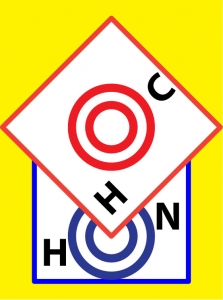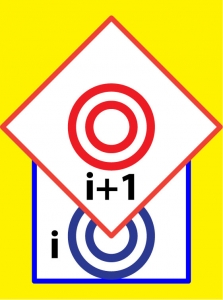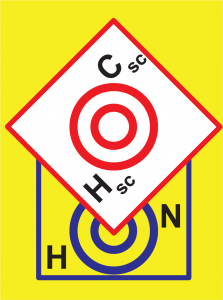![]() SARA (Software for Accordion Relaxation Analysis) is a user-friendly MATLAB software package for analyzing ‘accordion spectroscopy’ NMR relaxation data. Accordion spectroscopy provides relaxation rates in a fraction of the time required by traditional methods. SARA permits to employ various protocols for extracting rates, as described in Harden BJ, Frueh DP. SARA: a software environment for the analysis of relaxation data acquired with accordion spectroscopy. J Biomol NMR. 2014;58(2):83-99. PMCID: 4075063. DOI 10.1007/s10858-013-9807-x.
SARA (Software for Accordion Relaxation Analysis) is a user-friendly MATLAB software package for analyzing ‘accordion spectroscopy’ NMR relaxation data. Accordion spectroscopy provides relaxation rates in a fraction of the time required by traditional methods. SARA permits to employ various protocols for extracting rates, as described in Harden BJ, Frueh DP. SARA: a software environment for the analysis of relaxation data acquired with accordion spectroscopy. J Biomol NMR. 2014;58(2):83-99. PMCID: 4075063. DOI 10.1007/s10858-013-9807-x.
The software is distributed free for academics via flint box.
![]()
Pairwise_covarCOSCOM.m is a MATLAB script that produces 3D Covariance Sequential COrelation Maps from pairs of triple-resonance backbone experiments. The major application is for sequential assignment. The script translates information traditionally obtained by parallel analysis of so-called Intra (HNCA, HN(CA)CO, HN(CA)CB) and Seq (HN(CO)CA, HNCO, HN(COCA)CB) spectra into direct correlations between amide resonances of sequential residues (e.g. HNHs, HNNs, etc.). When several pairs of spectra are provided, the entire information is combined in each map, and they thus only feature sequential correlations satisfying all datasets. The script performs spectral derivatives to remove, attenuate, or identify artefacts as described in Harden BJ, Nichols SR, Frueh DP. Facilitated assignment of large protein NMR signals with covariance sequential spectra using spectral derivatives. J Am Chem Soc. 2014;136(38):13106-9. PMCID: 4183633. DOI: 10.1021/ja5058407. An updated script producing 4D maps is found below. 3D maps may be useful when high resolution is needed since 4D maps may require low resolution for practical use with software for resonance assignment in 2016.
The software is distributed free for academics via flintbox.
 Pairwise_covar_ILV.m is a MATLAB script that produces 4D Covariance Maps pairing amide resonances with methyl resonances. The application lies in assigning methyl resonances from assigned amide resonances. The script requires 3D spectra of HNCA, HN(CA)CB, HMCM(CG)CB, as inputs, and for Ile and Leu, HMCM(CGCB)CA. Spectra must have been processed as described in Mishra SH, Frueh DP. Assignment of methyl NMR resonances of a 52 kDa protein with residue-specific 4D correlation maps. J Biomol NMR. 2015;62(3):281-90. PMCID: 4496284. DOI: 10.1007/s10858-015-9943-6. This script is provided as a legacy, since the more general script below outperforms it in computing time (and ease of use). Download Covar_ILV.
Pairwise_covar_ILV.m is a MATLAB script that produces 4D Covariance Maps pairing amide resonances with methyl resonances. The application lies in assigning methyl resonances from assigned amide resonances. The script requires 3D spectra of HNCA, HN(CA)CB, HMCM(CG)CB, as inputs, and for Ile and Leu, HMCM(CGCB)CA. Spectra must have been processed as described in Mishra SH, Frueh DP. Assignment of methyl NMR resonances of a 52 kDa protein with residue-specific 4D correlation maps. J Biomol NMR. 2015;62(3):281-90. PMCID: 4496284. DOI: 10.1007/s10858-015-9943-6. This script is provided as a legacy, since the more general script below outperforms it in computing time (and ease of use). Download Covar_ILV.
New: We provide an example folder that contains 3D data necessary for obtaining methyl covariance maps, NMRpipe scripts for processing the data, an updated MATLAB script for generating the covariance maps, a CARA repository for aiding analysis and a brief protocol for using this example folder. Download: Example_methyls_covariance.zip
Here, we also provide the old MATAB scripts and NMRpipe processing scripts to generate methyl covariance maps using a protocol as reported in the original publication, Mishra and Frueh, J Biomol NMR 2015. In order to use this legacy example folder, you also need to download and unzip the above example folder “Examples_methyls_covariance.zip” in the same directory. Download: Example_methyls_covariance_legacy.zip
 Covariance_4D.m is the latest (2016) script for generating 4D covariance correlation maps. It was designed for sequential assignment, as described above, but could be used to generate correlation maps for methyl resonance assignment. In addition to previously implemented features, the code applies optional matrix power to the entire 4D array. Maps are obtained in a fraction of the time used for scripts above and the matrix power can be modified to improve spectral qualities. Details can be found in Harden BJ, Mishra SH, Frueh DP. Effortless assignment with 4D covariance sequential correlation maps. J Magn Reson. 2015;260:83-8. PMCID: 4628886. doi:10.1016/j.jmr.2015.09.007. A description of the MATLAB script and detailed instructions for appropriate processing of the 3D spectra and visualizing/analyzing the generated covariance maps can be found in Harden BJ, Frueh DP. Chapter 16 Covariance NMR Processing and Analysis for Protein. Methods Mol Biol. 2018;1688:353-373. PMID: 29151217. doi: 10.1007/978-1-4939-7386-6_16. Download Covar_Distribution.
Covariance_4D.m is the latest (2016) script for generating 4D covariance correlation maps. It was designed for sequential assignment, as described above, but could be used to generate correlation maps for methyl resonance assignment. In addition to previously implemented features, the code applies optional matrix power to the entire 4D array. Maps are obtained in a fraction of the time used for scripts above and the matrix power can be modified to improve spectral qualities. Details can be found in Harden BJ, Mishra SH, Frueh DP. Effortless assignment with 4D covariance sequential correlation maps. J Magn Reson. 2015;260:83-8. PMCID: 4628886. doi:10.1016/j.jmr.2015.09.007. A description of the MATLAB script and detailed instructions for appropriate processing of the 3D spectra and visualizing/analyzing the generated covariance maps can be found in Harden BJ, Frueh DP. Chapter 16 Covariance NMR Processing and Analysis for Protein. Methods Mol Biol. 2018;1688:353-373. PMID: 29151217. doi: 10.1007/978-1-4939-7386-6_16. Download Covar_Distribution.
New: We provide an example folder that contains the 3D data necessary for obtaining backbone 4D covariance maps, NMRpipe scripts for appropriate processing of the data, recent MATLAB script for generating the maps, a CARA repository to visualize/analyze the 4D maps and a detailed protocol for using this example folder. Download: Example_backbone_covariance.zip

covar_4D_HCccoNH_gicSymAsym.m is an updated covariance MATLAB script used to generate two 4D covariance maps viz., 4D-HCCH-TOCSY and a 4D-HCccoNH using the input 3D spectra 3D-HCCH-TOCSY and 3D-HcccoNH. The 4D maps thus generated will assist in obtaining protein sidechain assignments. The script simultaneously calculates both the 4D maps as symmetric and asymmetric covariances for the pair of input 3D spectra using GIC formalism. Matrix square-rooting and spectral derivative along the covaried dimension are applied synergistically to remove pervasive artifacts which are otherwise present in such 4D maps. The details of the updated script and its applications are described in Aswani K. Kancherla, Kenneth A. Marincin, Subrata H. Mishra, Dominique P. Frueh. Minimizing Pervasive Artifacts in 4D Covariance Maps for Protein Sidechain NMR Assignments; Journal of Physical Chemistry A, 2021 (under review). The manuscript also describes utility of covariance for rescuing weak correlations and for obtaining assignments of asparagine sidechain amide resonances using covariance of routinely acquired 3D triple resonance spectra. The updated MATLAB script, example input spectra, and necessary NMRPipe processing scripts can be downloaded. Download: covariance_protein_sidechains_v4.zip
Notes about COVARIANCE. Pairwise_covar matlab scripts require the script add_spectrum_pair.m and the covarianceNMR_toolbox_v1.1 developed by our colleagues David A. Snyder, Timothy Short, Leigh Alzapiedi, and Rafael Bruschweiler. Covariance_4D.m needs only the toolbox. All scripts use spectra processed with NMRpipe, developed by Frank Delaglio.
Spectra must have been processed as described in the associated publications (see links above). Correlation maps will be generated as long as covaried (subsumed) dimensions have the same size. Combined maps will be produced as long as reporting dimensions (not subsumed) have the same size. Typical sources of error: different transposition settings in input spectra; time-reversal in one spectrum; mismatch in covaried spectral regions (offsets), etc. We recommend that users identify outlier signals in original spectra and verify that their coordinates match in Intra and Seq spectra, using data points rather than frequency units.
Covariance correlation maps have increased dynamic ranges. Depending on which software is used for analysis, contours may need to be adjusted dramatically when visualizing different planes.
Pulse sequences
Time-shared HN-TROSY/HC-HSQC-NOESY. This time-shared experiment provides simultaneously an HN-TROSY-NOESY spectrum, featuring sensitivity-enhancement and TROSY in indirect proton and nitrogen dimensions, as well as an HC-HSQC-NOESY. The experiment was designed for optimal non-uniform sampling acquisition at the time of coding since fewer signals are to be reconstructed compared with NOESY-HSQC type experiments. The package includes a script needed to obtained sensitivity-enhancement, line-selection, separation of HN and HC spectra, and quadrature detection. Download TS_TROSY_NOESY.
Isotope Filtering using Delayed Decoupling (Xd). Isotope filtering using sequential tuned J filters can be supplemented with additional suppression of signals escaping these filters using delayed decoupling. The package contains two pulse sequences: 1) A 1D double sequential, tuned isotope X half-filter with an additional filter using delayed decoupling shared with a water suppression period and 2) A 2D TOCSY using a sequential, tuned isotope X half-filter and a delayed decoupling filter in t2. The experiments allow for more robust simultaneous suppression of JNH and multiple JCH couplings. Download KM_Xd_pulprog.
1D Isotope and Diffusion Filter. This experiment implements a diffusion filter using a stimulated echo and isotope filters with a double sequential tuned X half-filter (with the first concatenated in the diffusion decoding period) and an additional isotope filter using delayed decoupling (Xd) shared with a water suppression block. The pulse sequence allows for monitoring attachment of unlabeled moieties to labeled biomolecules. Download KMxfdiff1dpr19Xd.
